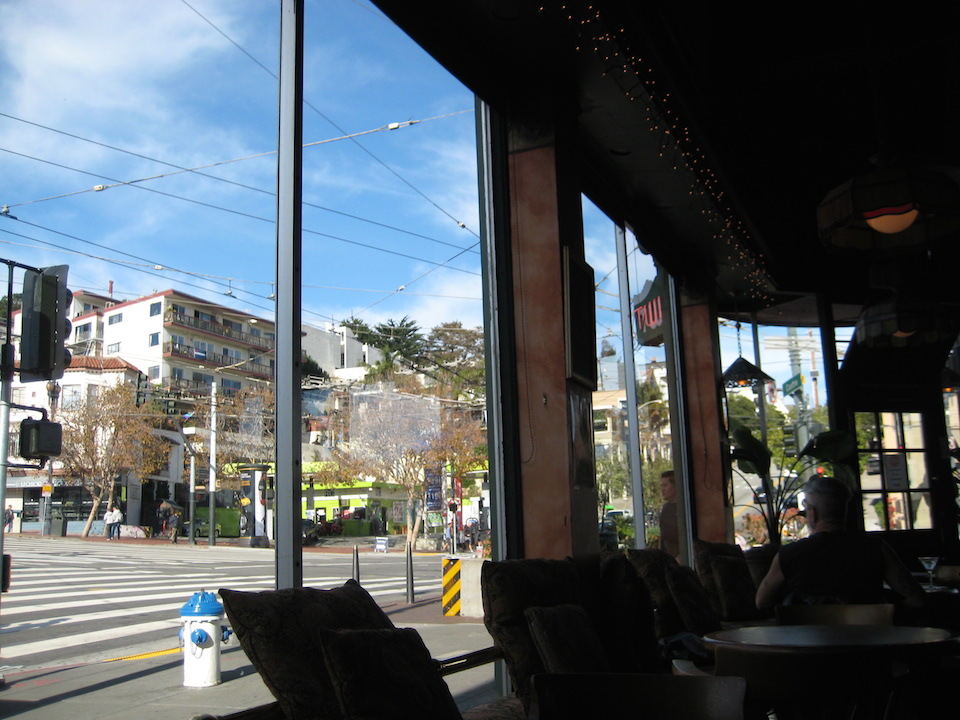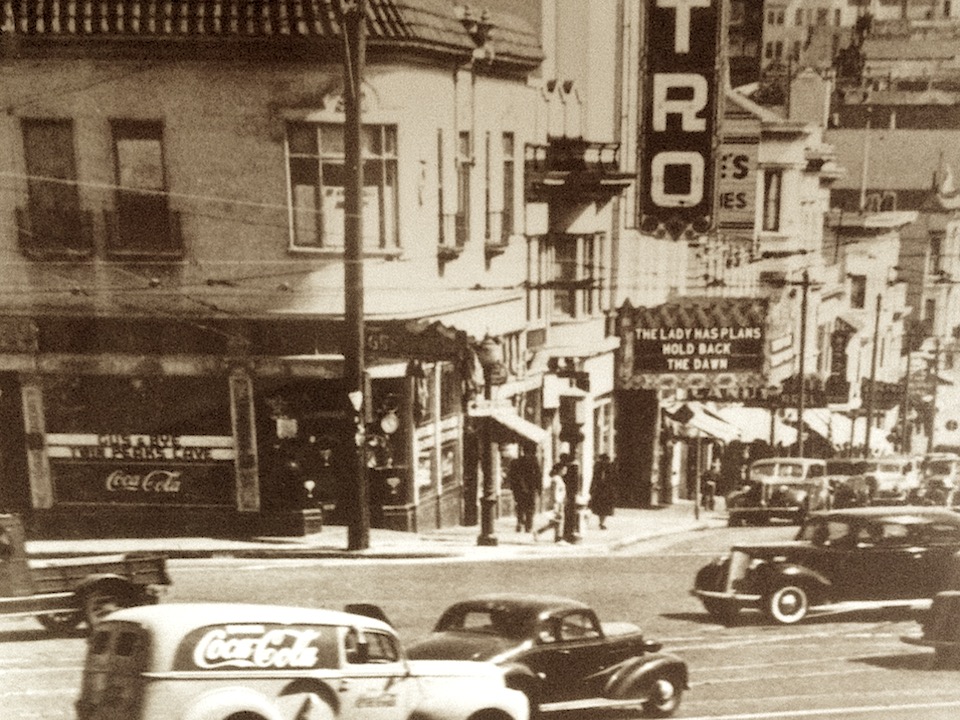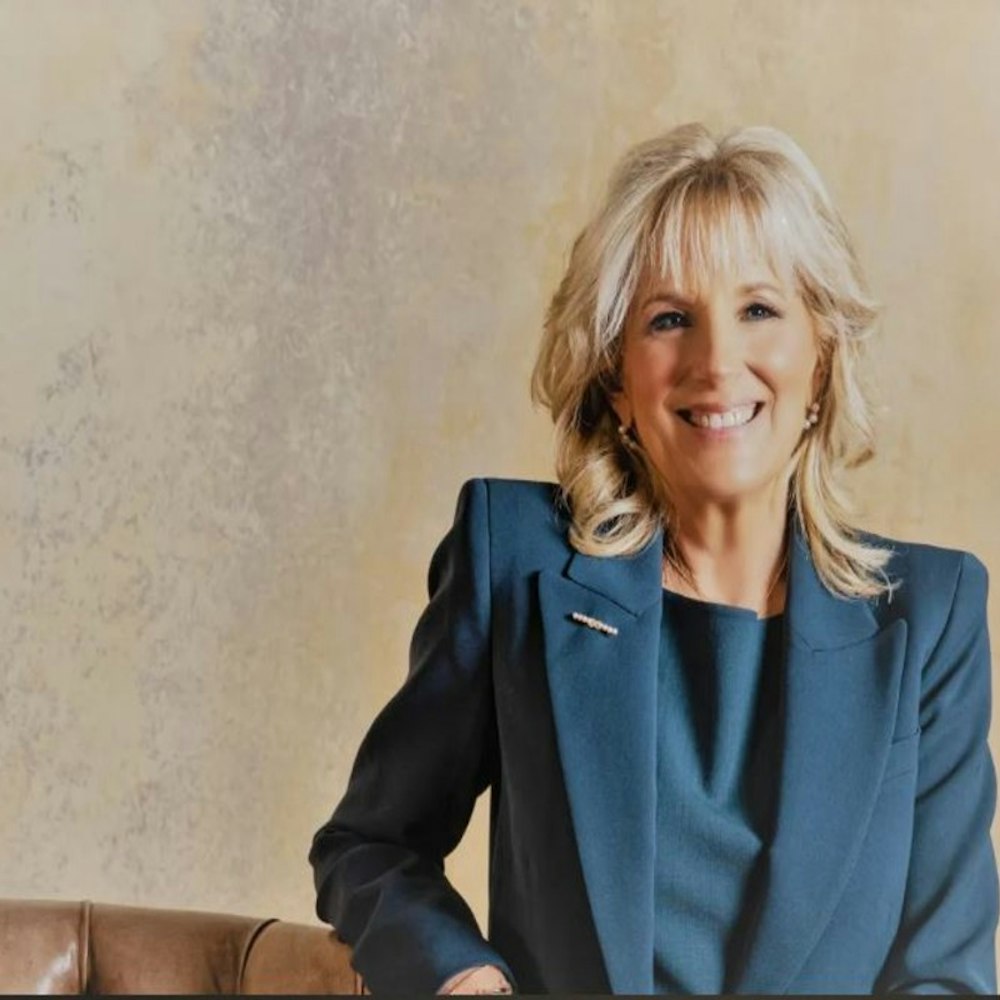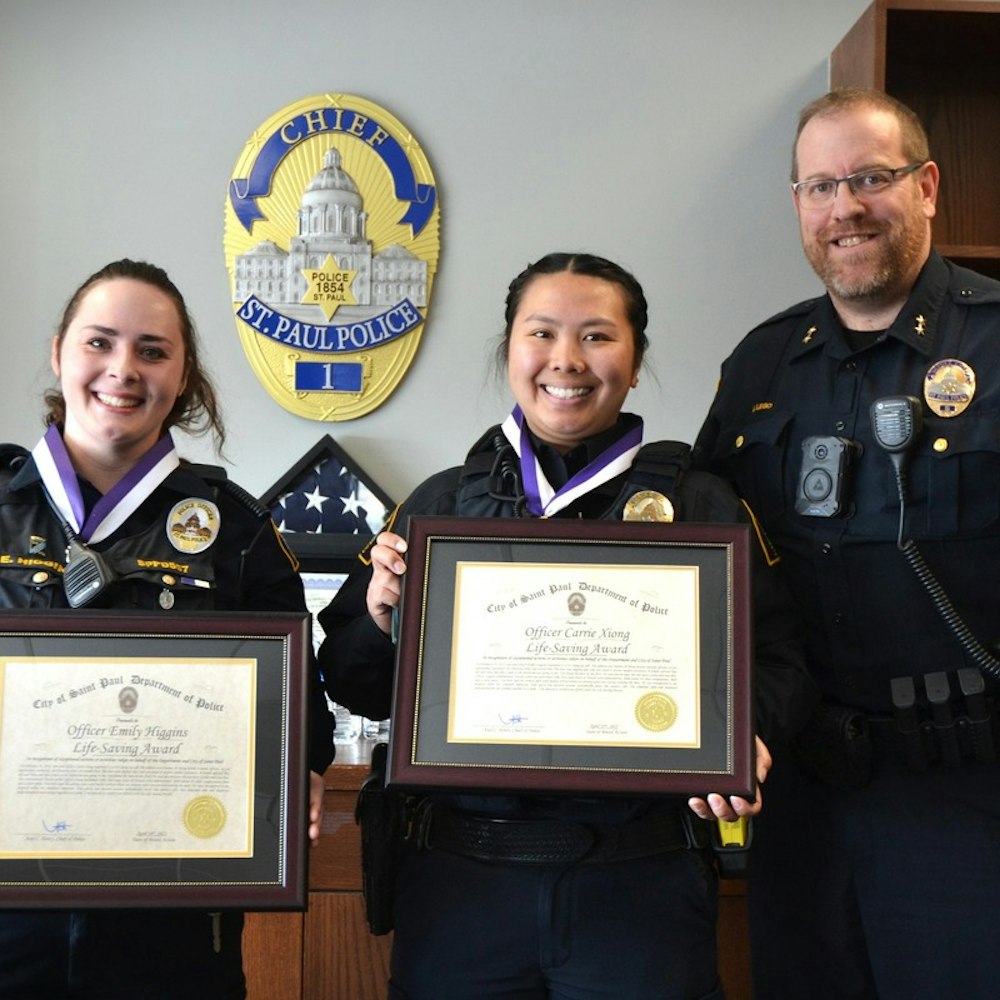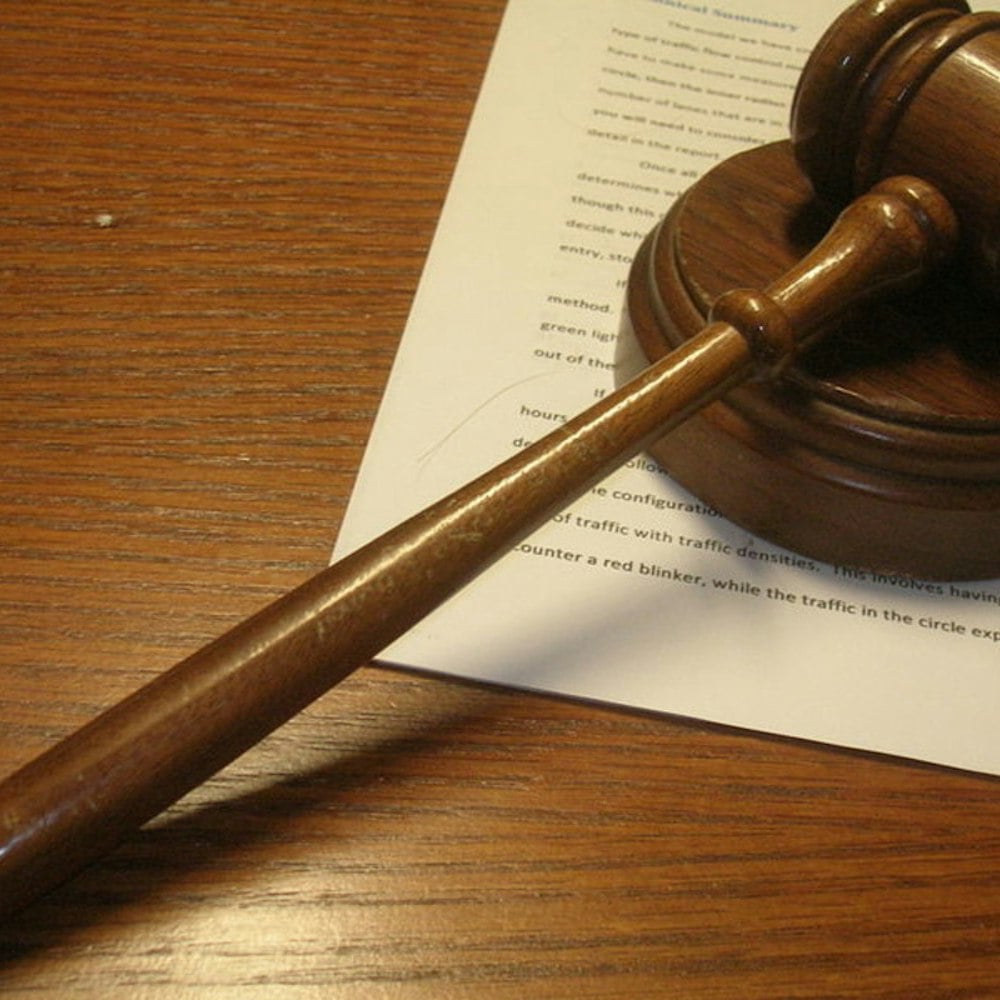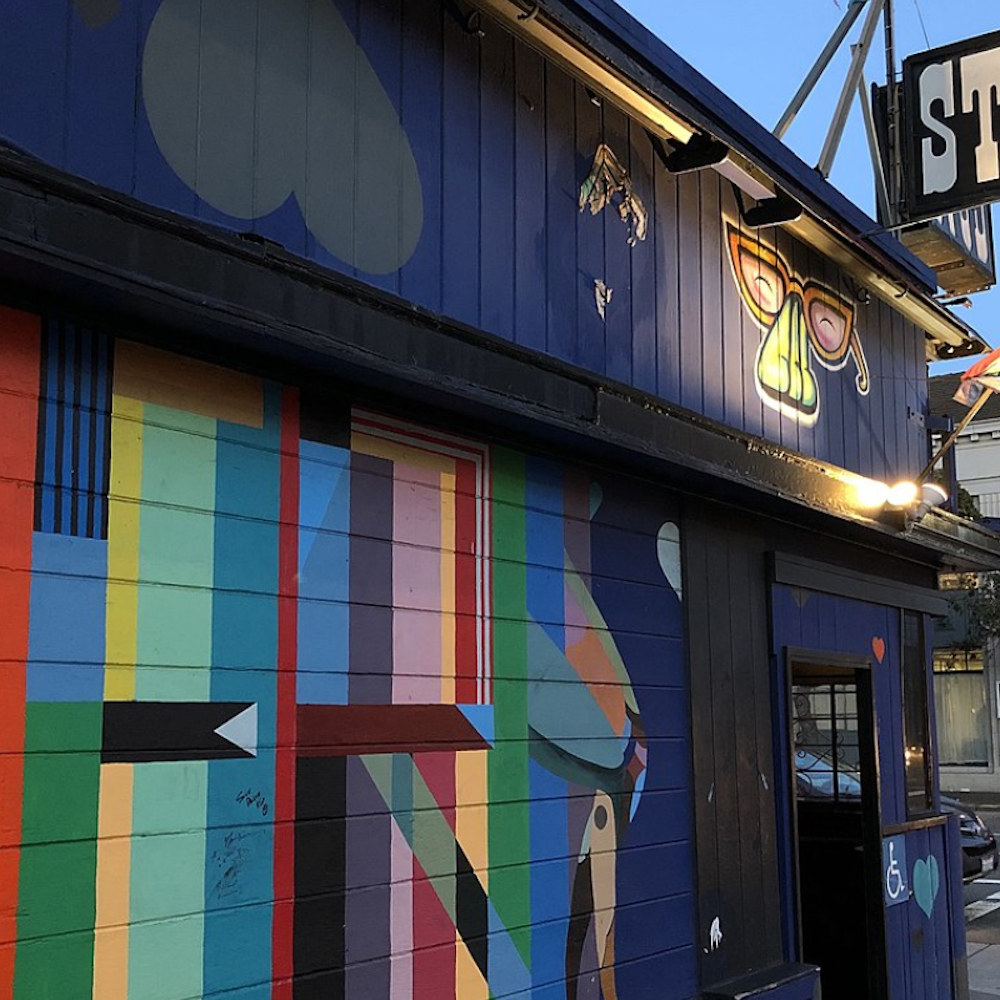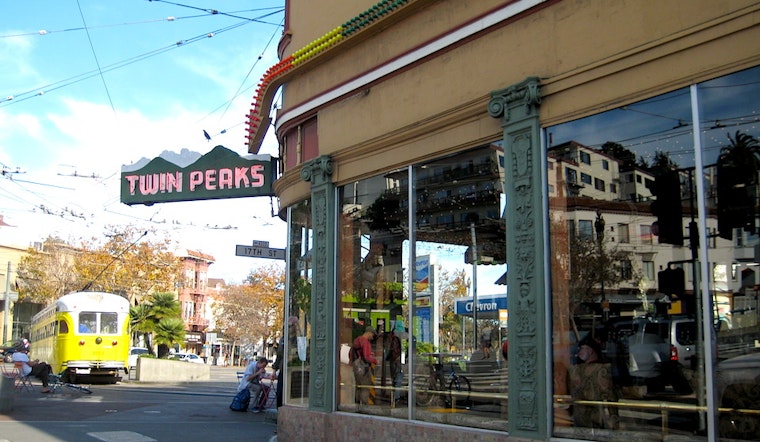
When MaryEllen Cunha and Peggy Forster took over Twin Peaks Tavern in 1972, the surrounding neighborhood had already begun to morph from the blue collar bedroom community known as Eureka Valley to an LGBTQ mecca called the Castro. Located in the heart of the community at the intersection of Castro, Market, and 17th streets, Twin Peaks Tavern—open since 1935 as a working-class dive bar—became the first gay bar in San Francisco to feature expansive windows, making LGBTQ patrons visible to the neighborhood.
In today's post-marriage-equality times, it might be hard to understand what the fuss was about, but at the time, Twin Peaks Tavern was revolutionary. Events like the Stonewall Riots and the Compton's Cafeteria Riot were still fresh in people's minds, and equality laws were yet to be passed. It was the first "out" generation in United States history. "Out" is, of course, a relative term: in 1972, the gay men and women who frequented the Twin Peaks Tavern might have been loud and proud in the Castro and around their gay friends, but not necessarily with their families or at their jobs. Workplace and police harassment remained a problem for many.
"The Castro started attracting gays in the late '60s," remembered Cunha in a 2012 interview with the Historic Preservation Commission. "There were a couple gay bars on Castro and Market. Charlotte and Peggy owned a group of bars— The Mint, The Trap, The Blue and Gold, Gilmore’s up at the cable car turnaround, Sharp’s Bar and Restaurant and a bar down in San Carlos. They also owned the Golden Cask on Haight Street. I only had the Twin Peaks Tavern. That was enough for me."
Known as "the girls", Cunha and Forster opened up the blocked-off windows, created a fern bar ambiance, and instituted a "no touching" policy to encourage conversation over cruising. One thing they kept was the historic sign, which still announces the bar's presence on that corner.
“The Twin Peaks Tavern sign has always been there from the ‘30s or ‘40s," Cuhna remembered. "The only thing
we did was add the little cocktail glass. Later, we put the colored lights on the arrows ... We wanted to put the gay colored
lights, but, we couldn’t find them anywhere, so we dipped them—we painted them
down in my basement ... The sign was gorgeous! It still is ... We were never tempted to
change the sign.”
A historical photo from 1942 hangs in the bar's upper sitting area.
Twin Peaks' current co-owners Jeff Green and George Roehm, longtime bartenders and friends of "the girls" who took over the bar in 2003, acknowledge the positive changes that have been made in the gay community since those early days. "We've made amazing strides in a generation," Green said. "I've been with my husband 25 years. I never thought we'd be able to get married."
Both men take great pride in the friendly atmosphere they nurture at the bar. "We provide a very comfortable atmosphere," Roehm said. "It's a conversation bar—people come to socialize."
With the changing times, the clientele also continues to evolve, with a more even mix of men and women, as well as more straight patrons. "There's a great community here," said straight ally Katie Edson, who lives in the neighborhood. "It's nice to have a place where people know your name. I've been here a year and I come in once or twice a week."
Another patron, Tom McDonald, sees Twin Peaks as "the Castro Cheers." He came across the tavern when visiting on vacation. "I fell in love with this place," he remembered. "When I moved here, the guys remembered me from my visits. The bar has diversity and camaraderie." (The bar's windows, perhaps its more mature crowd, and, as commenter reddiva notes, its history as a gathering place during the AIDS epidemic, have also earned it the nickname "the Glass Coffin.")
While Roehm and Green identify changes in The Castro, such as skyrocketing rents and an exodus of many older LGBTQ residents, they still see the neighborhood as a go-to place for the queer community. "On Saturday night a lot of gay people are hanging around, and having a good time, even if they may not all be locals," said Green. "Everyone is welcome."
History adorns many of the walls by the bar.
Green and Roehm have a strong sense of community and try to support the neighborhood as much as they can. "We have an annual Christmas toy drive," Rohm said. "The Fire Department gives out the toys." "We also have a small AIDS Walk team," said Green. "Last year we raised $26,822 with eight or nine walkers. Additionally, we sponsor Help Is On The Way, a concert series which raises funds for various AIDS organizations."
Elements of the neighborhood that have improved, according to Green and Roehm, include the physical changes that have happened in the Castro. They admire recent additions like the wider sidewalks, the rainbow crosswalk, and the Rainbow Honor Walk. While those changes are now a positive thing, though, they note the toll that last year's construction process took on the neighborhood, and on business."It was a tough year while the construction was going on," recalled Green. "Because of our prime location, right on the corner, we got through it, but business was down."
But business bounced back, and the pair plan to continue operating Twin Peaks Tavern—which was designated as a historic landmark in 2013 by the Board of Supervisors—for many years to come.
Looking ahead as changes continue, will Twin Peaks remain a gay bar? Will the Castro lose its LGBTQ edge?
"I think the neighborhood will remain a gay area as it is now," said Roehm. "No one can predict the future," said Green. "But we'll be here."
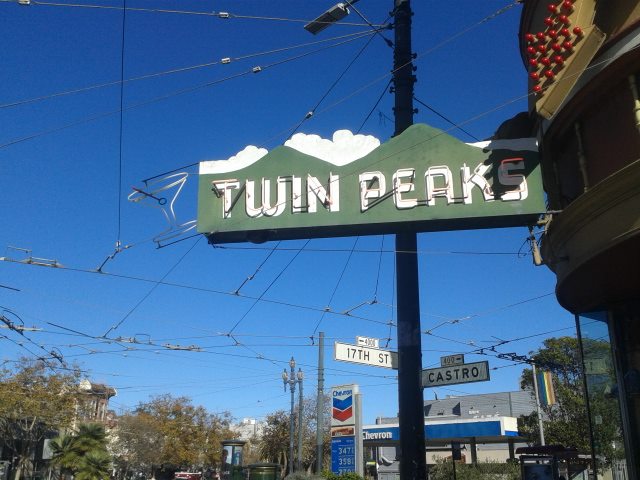
Photo: David-Elijah Nahmod
